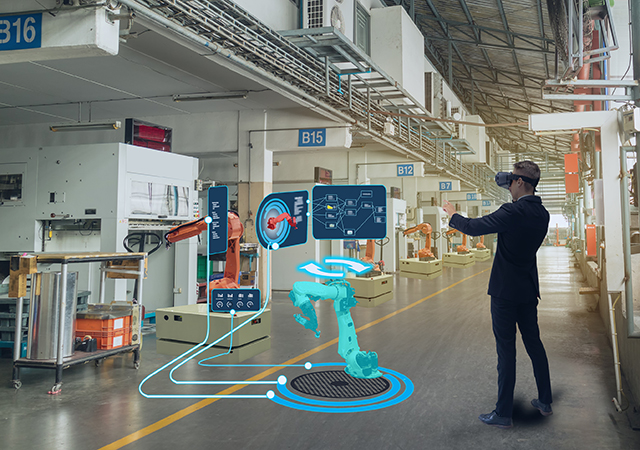

The global augmented industrial reality (AIR) market is poised for remarkable growth in the coming years, offering unprecedented opportunities for businesses across various sectors.
According to the latest report by The Business Research Company, the market size is expected to expand exponentially, reaching from $4.61 billion in 2024 to $12.93 billion by 2028, at a compound annual growth rate (CAGR) of 29.4 per cent.
MARKET OVERVIEW AND GROWTH POTENTIAL
•Early Adoption in Manufacturing: Manufacturers have been quick to embrace AIR technologies, leveraging their benefits for improved efficiency, precision, and safety in processes such as assembly, quality control, and maintenance.
•Pioneering Use in Maintenance and Training: AIR has proven invaluable in enhancing maintenance and training procedures, providing workers with real-time data and visual guidance to reduce downtime and improve performance.
•Integration with IoT Devices: The integration of AIR with the Internet of Things (IoT) has enabled the seamless transfer of data and the development of more comprehensive industrial solutions.
•Precision in Assembly and Quality Control: AIR's ability to overlay digital information and virtual objects onto the real world has significantly improved the accuracy and efficiency of assembly and quality control processes.
•Enhanced Remote Assistance: AIR technologies have facilitated remote assistance, allowing experts to provide guidance and support to workers in industrial settings, even from a distance.
KEY TRENDS SHAPING THE AIR MARKET
The AIR market is expected to witness several influential trends during the forecast period:
• Sustainability and Eco-Friendly Practices: There is a growing emphasis on developing AIR solutions that align with environmental sustainability and eco-friendly initiatives.
•Augmented Training and Skill Development: AIR is revolutionising training programs, providing enhanced learning experiences and skill development opportunities for industrial workers.
•Augmented Maintenance and Support: AIR technologies are enhancing maintenance and support processes, enabling more efficient and effective troubleshooting and repairs.
•Security and Privacy Enhancements: Safeguarding AIR systems and the data they generate is a critical priority, driving the development of robust security and privacy measures.
•Customised and Scalable Solutions: Manufacturers are increasingly focused on creating tailored AIR solutions that can be easily adapted to the specific needs of different industries and applications.
COMPETITIVE LANDSCAPE AND KEY PLAYERS
The AIR market is populated by a diverse array of players, including technology giants, industrial conglomerates, and specialised software providers. Some of the major companies operating in this space include Apple, Google, Microsoft, Huawei Technologies, Sony Group, Amazon Web Services, Siemens, Lenovo Group, IBM, Oracle Corporation, and Honeywell International.
These companies are driving innovation and exploring the full potential of AIR, with initiatives such as Magic Leap's ActiveSphere concept UI for automotive applications, showcasing the versatility and transformative capabilities of this technology.
GEOGRAPHICAL INSIGHTS
North America currently holds the largest market share in the global AIR market, reflecting the region's technological prowess and early adoption of these technologies. However, the Asia-Pacific region is expected to emerge as the fastest-growing market, driven by the rapid industrialisation and tech-savvy populations in countries like China and India.
CONCLUSION
The global augmented industrial reality market is poised for transformative growth in the coming years, driven by the increasing adoption of advanced technologies, the pursuit of sustainability and efficiency, and the ongoing digital transformation of industrial processes. Businesses that strategically align their operations and investments with these market dynamics will be well-positioned to capitalise on the vast opportunities presented by the AIR landscape.

